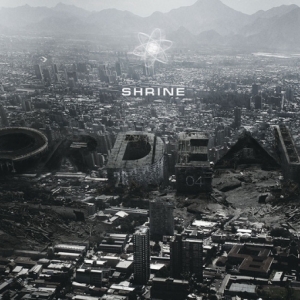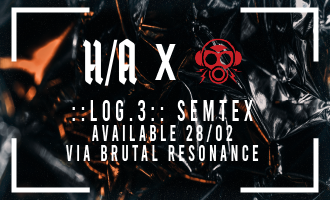Shrine - Ordeal 26.04.86

About 200 years ago the pace of technological change in western society began to quicken. Wind, water, and animal power, with their limitations of place and capacity, were supplemented and then replaced by the steam engine, which went on to power the factories of the industrial revolution. The railroad made it possible to move things and people quickly over great distances. The telegraph and, later, the telephone carried communications across the countryside.
By the beginning of the twentieth century, the notion of progress was closely linked with technological development, and that linkage intensified in the following decades. The automobile and the airplane changed not only travel but the nature of our cities and towns. Radio and then television brought more of the outside world into everyone’s homes. Knowledge about the causes of diseases brought new treatments and preventive measures. Computers appeared, and soon the transistor made them smaller, more powerful and more accessible.
But if you pay attention, the main driving force behind all the changes is the one and the only thing- new and more efficient sources of energy; they offer humanity opportunities that have not been available ever before. And of course, an active development of nuclear power in the middle of the twentieth century inherently contributed to the technological boost. But as we all know, with great power comes great responsibility, and besides all the modern technological leapfrogging hides the new dangers that threaten humanity. Environmental problems of our time – excessive consumption and wasteful use of natural resources, waste production and consumption pollution, irresponsible use of the natural power sources- they are more relevant and timely than ever. The warning signs are everywhere, whether it is a global warming or other natural cataclysms, but the planet sends them repeatedly during the last decades. And of course, if we remember the most devastating and significant tragedies, this list will never be full without the Chernobyl nuclear station accident that radically changed the lives of many nations.
I am sure that there is no need to explain the importance of the tragedy that had an impact on almost all the people of Europe, besides its effect continued to reverberate for many years. The story of this event was shared countless times, its memory was chanted in countless ways. But it will never be enough, not 30 years, and not even after 100 years, it remains a festering sore on the conscience of humanity. And of course, an experimental music scene couldn’t remain indifferent with many dozens of albums dedicated to Chernobyl accident, while Shrine’s latest album deservedly occupies a worthy place in my heart.
The name of the bulgarian resident Hristo Gospodinov, the mastermind behind the dark ambient project Shrine, showed up several times on the pages of our web zine in the past. Keeping the level of the material high from one album to the next since 2003, this artist has managed to establish himself as one of the biggest names of a cinematic type of dark ambient. With his latest release under a quite ingenious name “Ordeal 26.04.86”, he tries to translate his vision of the tragic Chernobyl tragic into six tracks of 50 minutes running time that could possibly reflect the whole depth of the devastation and suffering.
As I see it, if the artist decides to exploit a specific theme of such a grandiose value, the product of his activity should meet the standard. However, there is no ground to doubt the ability of Shrine to create a really vast soundscapes and this record is the best proof. “Ordeal 26.04.86” is a story of the wicked egotism of man, his naive gigantism and his subtle will to power multiplied by feeling of a self-impunity. The album opens up with the composition “Atomgrad” (atom city) full of solemn and magnificent atmosphere as if inviting the listener for a walk between the technological monuments of the totalitarian regime. The track fills my heart with calmness and happiness of progressive socialism together with a pride in the obtained results, birds singing and floating melody - none of this bodes well for the chaos to come. “Radiant Skyline (Unit 4)” is a kind of a warning track that adds a strong feeling of anxiety and draws a gloomy picture of a possible disaster. And of course, “The Silent Apocalypse” corresponds perfectly with what came next- the worst of all happened straight off the ice.
As I have noticed in the past, one of the most significant qualities of Hristo as an artist is an outstanding attention to details which forms a unique spirit embedded into every composition. The multi-layered structure of the tracks is a real eye-catcher where every sound has its own meaning. It starts from the major components like the clearly defined melodies or the highly pronounced special effects, both are the driving force of the listeners’ mood. And it ends up with the small touches that maybe stick less out of the whole musical flow , but which have an important role in adding the full gamut of feelings to the story. It can be a continuous cracking sound of the Geiger counter in the tracks like “The Silent Apocalypse” and “The Night That Hell Broke Loose”, or the sound of acid rain in “Under the Graphite Clouds”; all of them actively reinforce the positive impression from the album.
Finally, it is important to mention the role of the last composition “The Burden of Knowledge” which name says for itself. For me, it is some kind of a requiem, the last accord for the Great State, inter alia, and for the Great Ambitions of mankind in general.
“...There was a great earthquake. The sun turned black like sackcloth made of goat hair, the whole moon turned blood red, and the stars in the sky fell to earth, as figs drop from a fig tree when shaken by a strong wind. The heavens receded like a scroll being rolled up, and every mountain and island was removed from its place.
Then the kings of the earth, the princes, the generals, the rich, the mighty, and everyone else, both slave and free, hid in caves and among the rocks of the mountains. They called to the mountains and the rocks, “Fall on us and hide us from the face of him who sits on the throne and from the wrath of the Lamb! For the great day of their wrath has come, and who can withstand it?”.
The spoken words chanting sentences from New Testament, Revelation chapter 6, fit into the context like never before drawing a firm line under the whole story, warning the next generations about their destructive impact on the surrounding world.
Jun 05 2018
Share this review
Facebook
Twitter
Google+
Shares
Buy this release
Cyclic Law
Shrine - Somnia is available at POPONAUT from 16,95€
Related articles
Shrine - 'Nihil'
Review, Jun 22 2014
Shrine - 'Somnia'
Review, May 20 2012
DVAR - 'Zii'
Review, Jun 17 2011
Triangular Ascension - 'The Chronos Anomaly'
Review, Jul 01 2013
Caul - 'The Long Dust'
Review, May 06 2013




